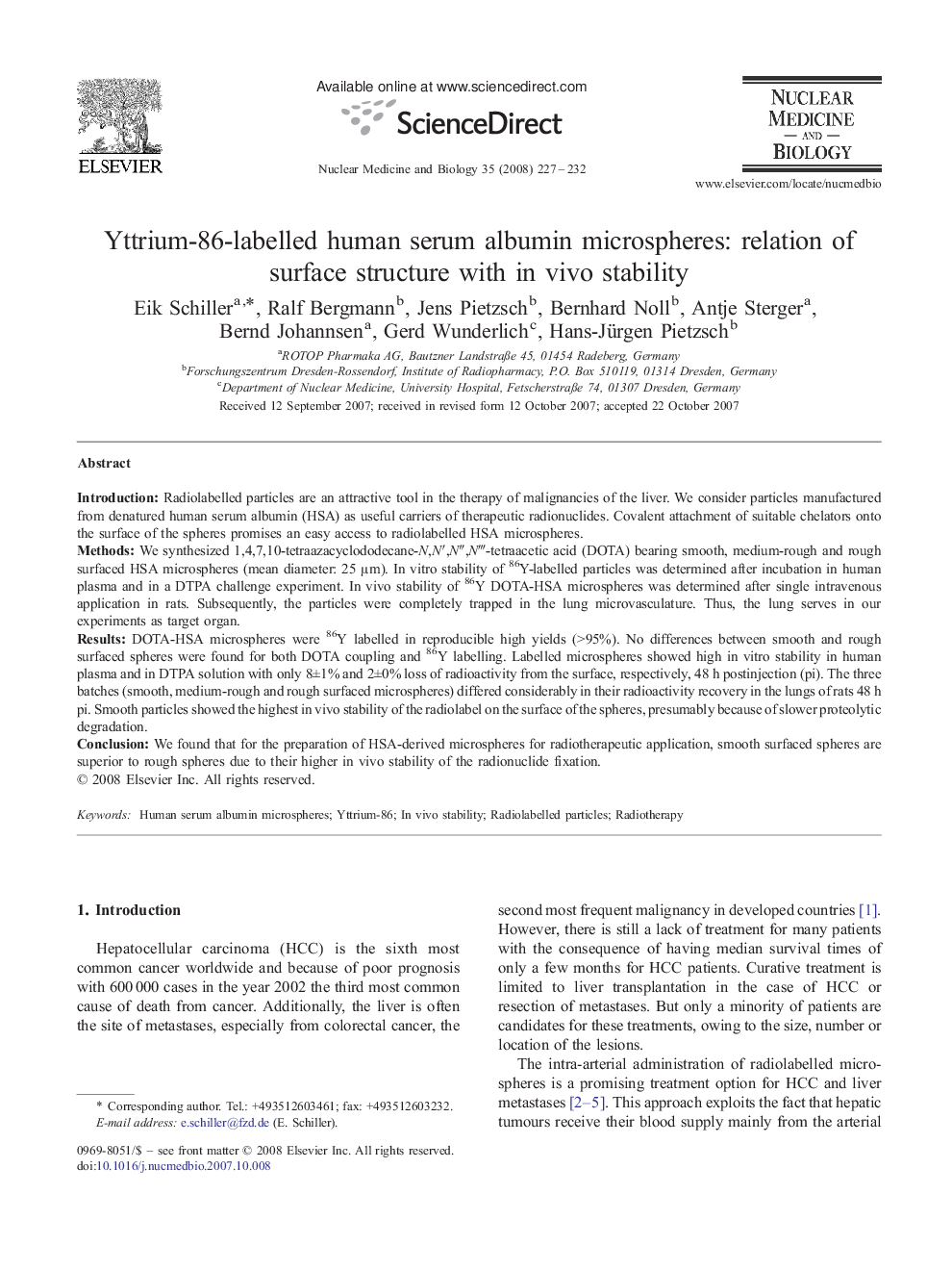| کد مقاله | کد نشریه | سال انتشار | مقاله انگلیسی | نسخه تمام متن |
|---|---|---|---|---|
| 2154613 | 1090243 | 2008 | 6 صفحه PDF | دانلود رایگان |

IntroductionRadiolabelled particles are an attractive tool in the therapy of malignancies of the liver. We consider particles manufactured from denatured human serum albumin (HSA) as useful carriers of therapeutic radionuclides. Covalent attachment of suitable chelators onto the surface of the spheres promises an easy access to radiolabelled HSA microspheres.MethodsWe synthesized 1,4,7,10-tetraazacyclododecane-N,N′,N″,N‴-tetraacetic acid (DOTA) bearing smooth, medium-rough and rough surfaced HSA microspheres (mean diameter: 25 μm). In vitro stability of 86Y-labelled particles was determined after incubation in human plasma and in a DTPA challenge experiment. In vivo stability of 86Y DOTA-HSA microspheres was determined after single intravenous application in rats. Subsequently, the particles were completely trapped in the lung microvasculature. Thus, the lung serves in our experiments as target organ.ResultsDOTA-HSA microspheres were 86Y labelled in reproducible high yields (>95%). No differences between smooth and rough surfaced spheres were found for both DOTA coupling and 86Y labelling. Labelled microspheres showed high in vitro stability in human plasma and in DTPA solution with only 8±1% and 2±0% loss of radioactivity from the surface, respectively, 48 h postinjection (pi). The three batches (smooth, medium-rough and rough surfaced microspheres) differed considerably in their radioactivity recovery in the lungs of rats 48 h pi. Smooth particles showed the highest in vivo stability of the radiolabel on the surface of the spheres, presumably because of slower proteolytic degradation.ConclusionWe found that for the preparation of HSA-derived microspheres for radiotherapeutic application, smooth surfaced spheres are superior to rough spheres due to their higher in vivo stability of the radionuclide fixation.
Journal: Nuclear Medicine and Biology - Volume 35, Issue 2, February 2008, Pages 227–232